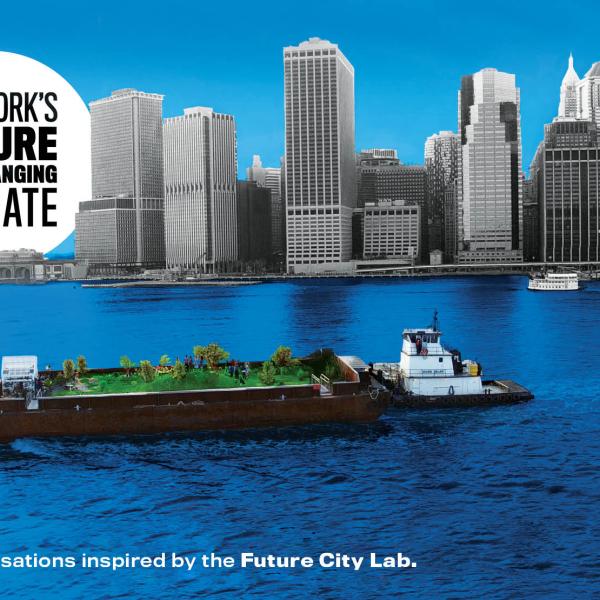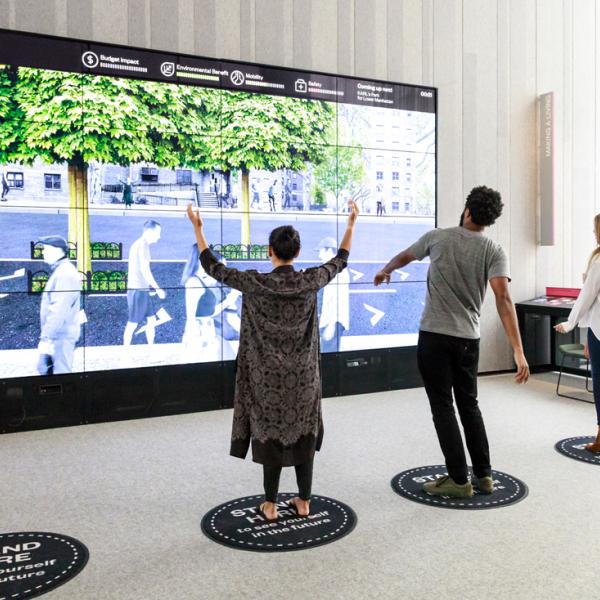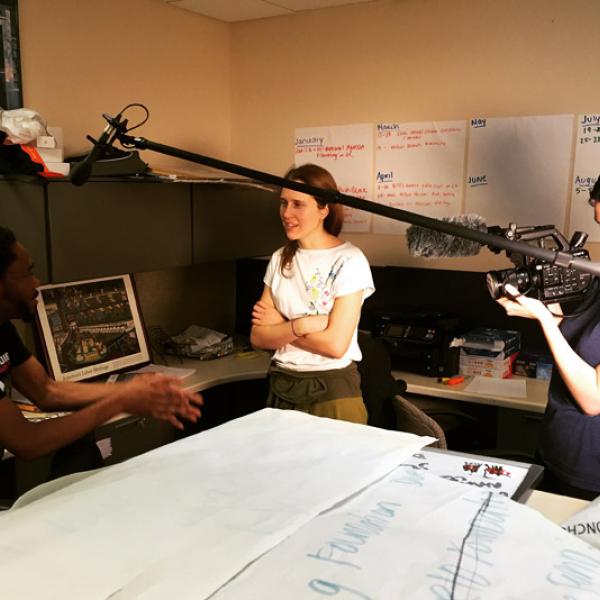"A Future Worth Living?"
Reflecting on the First Earth Day 50 Years Later
Monday, April 13, 2020 by
April 22, 2020 marks the 50th anniversary of Earth Day in New York City and nationwide. Right now, when people who are able to practice social distancing are mostly staying inside, it can be strange to think of 100,000 New Yorkers marching and picnicking on Fifth Avenue to celebrate the environment. Yet at a moment when questions about the role of government, mobilizing communities, and the future of our planet have come to the fore, it is well worth returning to the first Earth Day.
Earth Day was a collaboration between government and citizens. Proposed in 1969 by Wisconsin Senator Gaylord Nelson, Earth Day events were organized nationally by a handful of young activists and local volunteers. New York Mayor John V. Lindsay, who had created the nation’s first municipal Environmental Protection Administration in New York in 1968, closed Fifth Avenue to cars and delivered an impassioned speech. Some viewed the festivities as bad for business or a distraction from other issues. Yet, ultimately, support for Earth Day exceeded expectations and helped grow the environmental movement. By the end of 1970, the Nixon administration had established the Environmental Protection Agency and passed the Clean Air Act.
Earth Day united various constituencies and agenda—from elementary school anti-litter campaigns and college campus “teach-ins” to mothers who sought cleaner air, protestors against pesticides, and proponents of population control—under the banner of “a future worth living.” Because the first Earth Day fell on a school day, whole classes of students planted flowers, swept public spaces, recycled, and protested pollution. The day also engaged New York’s cultural producers: prominent ad man Julian Koenig came up with the name “Earth Day” (because it rhymed with birthday), while artists and designers such as Robert Rauschenberg and Milton Glaser created memorable graphics.
Environmental justice gained momentum in New York over the following decades. Activists increasingly emphasized “environmental racism,” or how toxins and lack of green spaces in poorer neighborhoods disproportionately affected communities of color. In the early 1970s groups such as the Young Lords decried high levels of lead paint and tuberculosis in their communities, while by the late 1980s groups such as El Puente and WE ACT formed to oppose environmental hazards like sewage plants and other pollutants that contributed to health disparities, including high rates of asthma. More recently, Hurricane Sandy in 2012 spurred many New Yorkers to confront climate change. In September 2014, over 300,000 people joined the People’s Climate March in Manhattan, and in September 2019, the Climate Strike in New York City involved tens of thousands of people and garnered international attention.
Many observers have invoked the threat of climate change and pollution during the COVID-19 pandemic. Some have pointed to falling pollution levels in cities, as certain industries are on hold and transportation has slowed. Others emphasize that those who already suffer disproportionately from air pollution—low-income communities of color who are also more likely to be working in healthcare, food, and other essential industries—are at greater risk from COVID-19. Both have suggested that this pandemic is practice for addressing climate change, forcing whole cities and nations to make drastic changes and to think big about how to help the most marginalized and vulnerable. Speaking during the first Earth Day in 1970, Mayor Lindsay noted that “the business of pollution is the twin brother of the business of poverty and despair.” As we face the challenges of these uncertain times, we can look to environmental justice advocates who have long argued that people and the planet are inextricably intertwined, and the health of one rests on the health of the other.
Visit the Activist New York exhibition online and the accompanying lesson plan for teachers to learn more about the history of Earth Day and explore other activist histories in New York City from the 1600s to the present.







